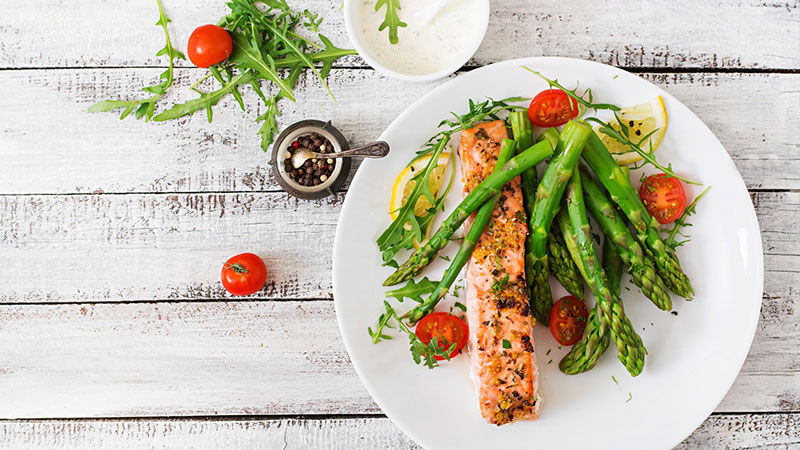Fish and Omega-3 Fatty Acids

Fish is a good source of protein and, unlike fatty meat products, it's not high in saturated fat. Fish is also a good source of omega-3 fatty acids.
Omega-3 fatty acids benefit the heart of healthy people, and those at high risk of — or who have — cardiovascular disease. Research has shown that omega-3 fatty acids decrease risk of arrhythmias (abnormal heartbeats), which can lead to sudden death. Omega-3 fatty acids also decrease triglyceride levels, slow growth rate of atherosclerotic plaque, and lower blood pressure (slightly).
Go Fish (At Least Twice a Week)
The American Heart Association recommends eating fish (particularly fatty fish) at least two times (two servings) a week. Each serving is 3.5 ounce cooked, or about ¾ cup of flaked fish. Fatty fish like salmon, mackerel, herring, lake trout, sardines and albacore tuna are high in omega-3 fatty acids.Increasing omega-3 fatty acid consumption through foods is preferable. However, those with coronary artery disease, may not get enough omega-3 by diet alone. These people may want to talk to their doctor about supplements. And for those with high triglycerides, even larger doses could help.
Patients taking more than 3 grams of omega-3 fatty acids from capsules should do so only under a physician’s care. High intakes could cause excessive bleeding in some people.
Eating fish, is there a catch?
Some types of fish may contain high levels of mercury, PCBs (polychlorinated biphenyls), dioxins and other environmental contaminants. Levels of these substances are generally highest in older, larger, predatory fish and marine mammals.The benefits and risks of eating fish vary depending on a person’s stage of life.
Children and pregnant women are advised by the U.S. Food and Drug Administration (FDA) to avoid eating those fish with the potential for the highest level of mercury contamination (e.g., shark, swordfish, king mackerel or tilefish); to eat up to 12 ounces (two average meals) per week of a variety of fish and shellfish that are lower in mercury (e.g., canned light tuna, salmon, pollock, catfish); and check local advisories about the safety of fish caught by family and friends in local lakes, rivers and coastal areas.
For middle-aged and older men and postmenopausal women, the benefits of fish consumption far outweigh the potential risks when the amount of fish are eaten is within the recommendations established by the FDA and Environmental Protection Agency.
Eating a variety of fish will help minimize any potentially adverse effects due to environmental pollutants.
Five of the most commonly eaten fish or shellfish that are low in mercury are shrimp, canned light tuna, salmon, pollock, and catfish. Avoid eating shark, swordfish, king Mackerel, or tilefish because they contain high levels of mercury.






